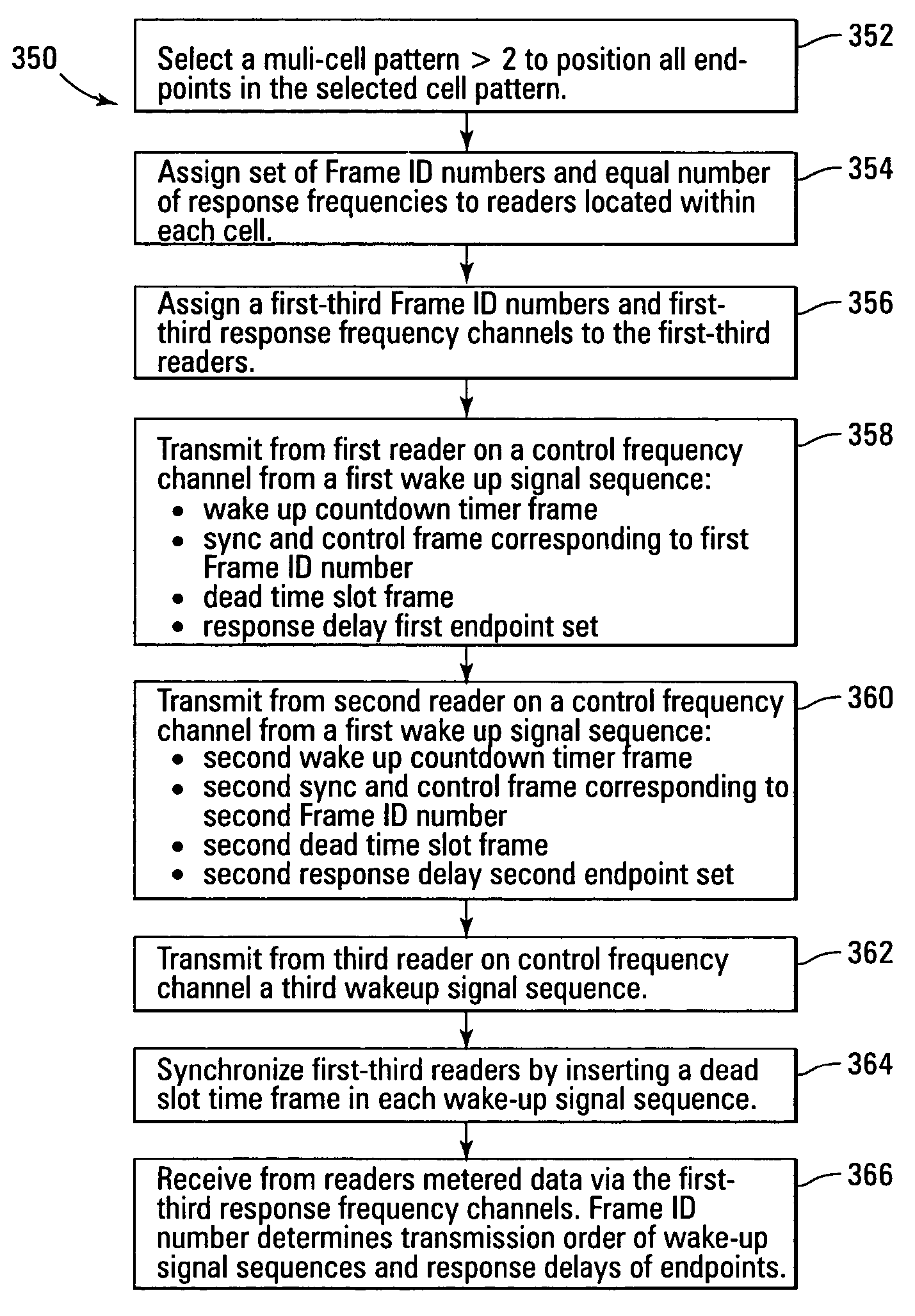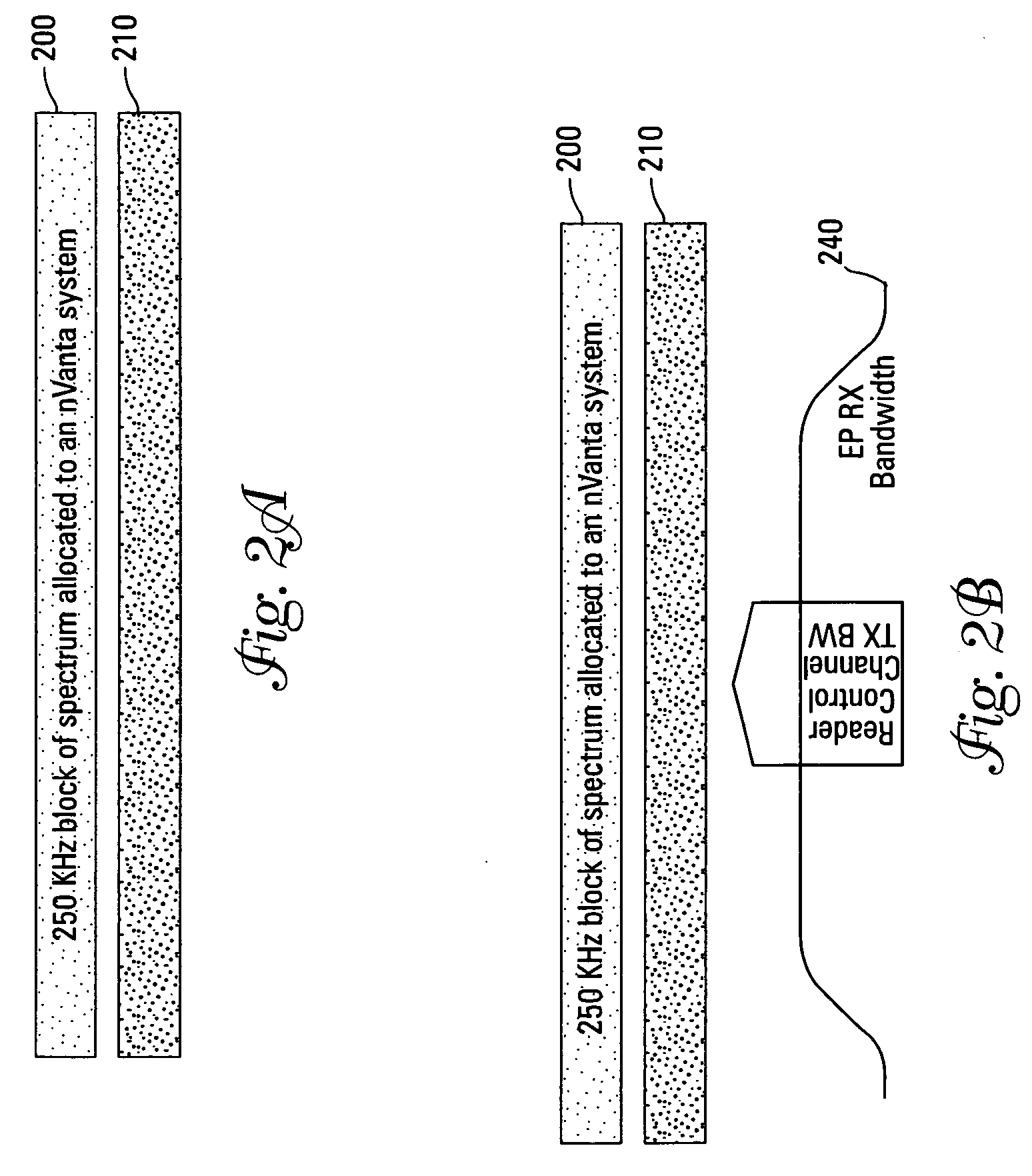System and method for optimizing contiguous channel operation with cellular reuse
- Summary
- Abstract
- Description
- Claims
- Application Information
AI Technical Summary
Benefits of technology
Problems solved by technology
Method used
Image
Examples
Embodiment Construction
The invention is generally directed to a method and a system for reducing the incidence of RF signal collision or interference in collecting data from remotely located meter modules via a fixed or a mobile data collection system. While the invention is not necessarily limited to such an application, the invention will be better appreciated using a discussion of example embodiments in such a specific context.
Referring to FIG. 1, the RF communications method of the invention is incorporated into a utility metering system 20 that monitors and retains data on a plurality of water, electric, and gas utility meters, the meters typically being located in various locations including single-family homes, multi-dwelling and high-rise developments. Utility metering system 20 generally comprises a plurality of meter endpoint encoder transmitter devices, or endpoint modules 22, that include gas endpoint modules 221, water endpoint modules 222 and electric endpoint modules 223. System 20 furth...
PUM
 Login to View More
Login to View More Abstract
Description
Claims
Application Information
 Login to View More
Login to View More - R&D
- Intellectual Property
- Life Sciences
- Materials
- Tech Scout
- Unparalleled Data Quality
- Higher Quality Content
- 60% Fewer Hallucinations
Browse by: Latest US Patents, China's latest patents, Technical Efficacy Thesaurus, Application Domain, Technology Topic, Popular Technical Reports.
© 2025 PatSnap. All rights reserved.Legal|Privacy policy|Modern Slavery Act Transparency Statement|Sitemap|About US| Contact US: help@patsnap.com



